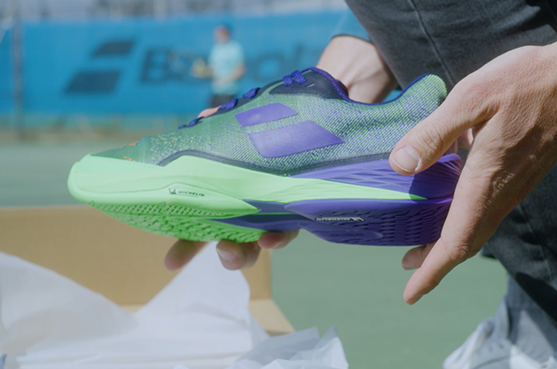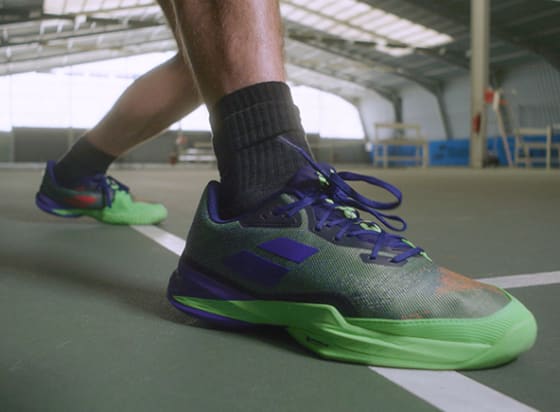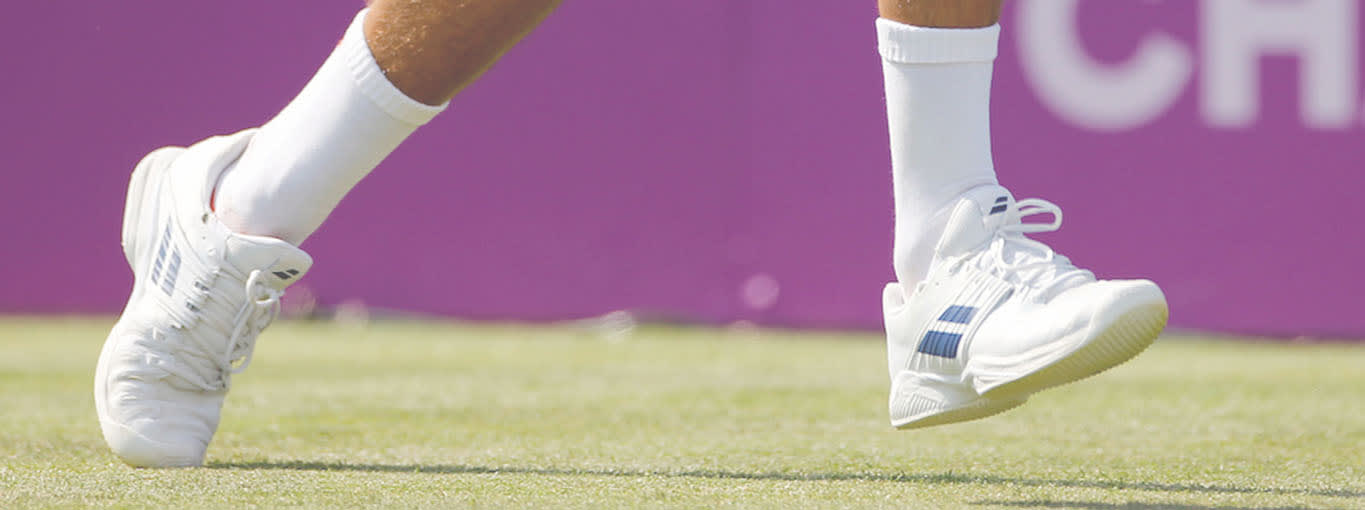Michelin and Babolat have worked closely together since 2003 on Babolat’s growing range of footwear. Together, the two French companies, who were both founded in the late 19th century – Babolat in 1875, Michelin in 1889 – have one goal: making the perfect racquet sports shoes.
On the surface, one of the oldest racquet sports companies in the world and one of the world’s biggest tire manufacturers might not appear to have too much in common. But it is the understanding of what happens when a tennis player runs and moves on a surface which explains why Babolat and Michelin, two iconic French companies, have become perfect partners – a collaboration that has helped both become leaders in their field.
“With Michelin, we saw a strong opportunity to make a link between tires and the surfaces we play racquet sports on,” says Guillaume Diard, Global Footwear Director at Babolat. “Michelin is a specialist in managing friction between two surfaces, between the road and the tire.”
The same principle applies to footwear in racquet sports such as padel, tennis, and badminton. Padel courts can feature sand, badminton requires indoor-specific soles, while tennis is played primarily on clay, grass, or hard courts.
“You need to find the right balance between the grip of the sole of the shoe and the surface you’re playing on,” says Diard. “Whether you play on a hard court, clay, grass, or indoors, you can’t have the same type of compound because the needs and benefits for the players are not the same.”
Babolat and Michelin began working together in 2003, when Babolat wanted to add footwear to its portfolio, which already included racquets, bags, strings, balls, and accessories. Babolat had concluded that there was a limited footwear offer specifically for tennis and decided to develop a 100% tennis shoe. Players needed a shoe adapted to the strong lateral movements of tennis without compromising durability. The team contacted Michelin, given its expertise in managing contact with the ground through tires.
Thanks to the partnership, “the Michelin brand is reaching more consumers who, like tire consumers, require reliable performance at the point of contact with the ground,” says Ian Rutherford, Footwear Global Manager at Michelin.
Working with Michelin, a global expert in grip technologies, gave Babolat a unique insight into what happens when rubber meets ground.

The shape of the lug
“When you look at a tire, it has a specific shape, depending on what it does,” says Guillaume Diard. “It’s the same thing for a shoe sole. So we work on the shape of the lug, depending on where and how the foot is moving, to give the best movement and grip possible at the right place for the right moment. We work on different solutions based on different surfaces to make sure Babolat shoes always provide a phenomenal experience when you play.”
Lugs are deep indentations in a pattern, like the tread of a tire, but in the case of a shoe the pattern of lugs is designed to provide the necessary footing.
“The patterns of the lugs are different based on where they are located on the sole,” adds Diard. “They are closer together on the inside of the shoe because that’s the part of the sole that experiences the most friction. We work on different solutions based on different surfaces to make sure we always give the player the right amount of grip.
“But it’s about more than just grip – it’s also the very specific movement needed for tennis, particularly the lateral moves. Take the unique S-shape outsole on the Jet tennis shoe, which was designed by Michelin to provide players with unrivalled movement, traction, and durability.”
Michelin’s vast knowledge of performance criteria for tires, including grip, has been transferred to Babolat footwear. “In some cases we require strong, immediate grip and in other cases just the right level of grip while sliding,” says Ian Rutherford. “This influences the rubber mix formulation, where Michelin has expertise. Apart from grip, Michelin is a leader in anti-abrasion performance for tires and this expertise is also relevant for Babolat.
“Different racquet sports, played on different surfaces, by different styles of player, require shoes that will move differently and therefore, for example, a different performance balance between grip and the ability to slide.”
Michelin soles are utilized on almost every model of Babolat shoes. The latest result of the collaboration between the two is the Jet Mach III, which Diard describes as “a full upgrade of the sole with Michelin.”

What was working and what wasn’t
Diard adds, “We studied the Jet Mach II: what was working, what wasn’t working, how the wear on the shoe was happening. And then we studied how the players played, what were the pressure points, what were the places where the tread or the lugs needed more density, where they needed less density, where do we need more grip or less grip, how does it get worn out through time? With the Jet Mach III, we produced the sole in the best possible way, with the lugs placed exactly where you need them.”
Like any relationship, the success of the partnership depends on the interaction between the people. In this regard, Babolat and Michelin work almost seamlessly.
“Both companies are passionate about what they do and both have a strong culture around innovation and the high quality of their products’ performance,” says Rutherford. “In the case of footwear specifically, Babolat’s focus on the performance of the sole adapted to the surface and the use of the shoe fits perfectly with Michelin’s focus on tire performance adapted to the ground surface and the type of vehicle and use of that vehicle.”
“Even though it's two companies,” says Diard, “we really feel we are part of the same story when we speak about what we are doing. It feels like we’re in the same company, even though we’re not. That’s something I found really surprising and at the same time, really great, because that’s how we get to do what we can do today.”




